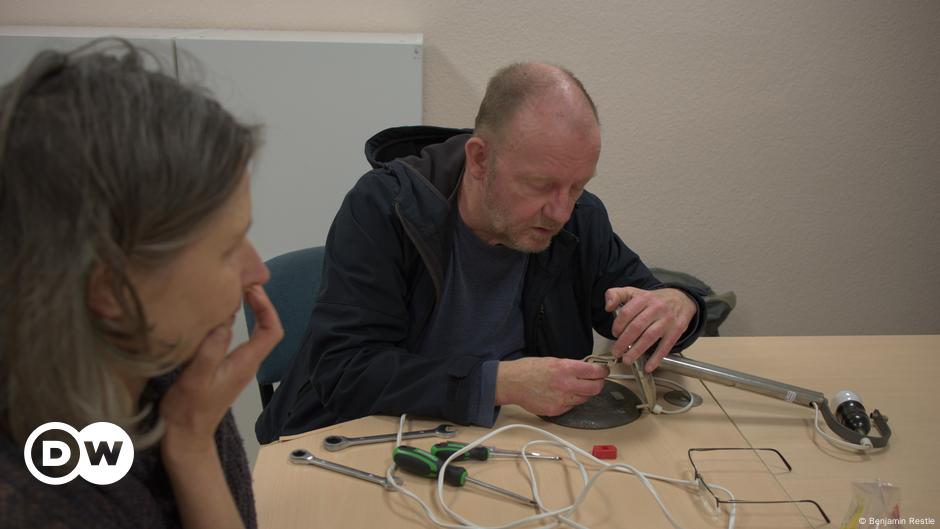Many European consumers today find themselves having to replace broken household appliances, such as hand-held mixers or white goods like fridges and dishwashers, even though they are technically fixable. This is because spare parts are often either prohibitively expensive or simply unavailable. Additionally, some products are designed in ways that complicate or prevent repairs altogether.
Ian Williams from the University of Southampton says many manufacturers are “deliberately” building products that are “designed for replacement, not repair.”
Rüdiger Kühr, head of the United Nations’ Sustainable Cycles Programme (SCYCLES), also thinks that “some prominent brands are trying to avoid repairs altogether, or easy repairs, because they want to control this business.” Kühr is the lead author of the latest UN Global E-waste Monitorthat is annually compiled by the United Nations Institute for Training and Research (UNITAR).
Companies naturally reject allegations like those made by Kühr. They claim they are not deliberately disincentivizing repairs and cite product liability issues arising from third-party repairs as the reason their products are difficult to repair.
Pile of electronic waste set to grow
The E-waste Monitor 2024 clearly states that the amount of e-waste has been increasing by an average of 2.6 million tons per year over slightly more than a decade.
In 2010, the report said, the world produced over 34 million tons of e-waste. That figure reached 62 million tons by 2022 — enough to fill 1.5 million heavy trucks. Only a small fraction of it, about 22%, is formally collected and recycled. The UN even expects a drop in the rate to 20% by 2030 “due to the widening difference in recycling efforts relative to the staggering growth of e-waste generation worldwide.”
According to the report’s latest available figures dating from 2022, Europe generated more e-waste per capita than any other region in the world, while at the same time boasting the highest collection and recycling rates.
By contrast, most developing countries generate significantly less e-waste per capita and have a thriving repair culture.
Karsten Neuhoff, who heads the Climate Policy Department at the German Institute for Economic Research (DIW), argues that in developing countries “labor costs are a lot lower relative to material or energy costs” which is why repairing products is still ” common practice.”
“My sense is that we Europeans lost some of our repair culture as labor costs increased and product prices declined,” Neuhoff told DW. “People felt it is more comfortable, easier, and to some extent more fashionable to buy new products rather than have old ones repaired. That encouraged manufacturers to make products that don’t last as long.”
Apparently, both European consumers and producers are happy with the status quo, he added.
While a developing country like India, for example, still has a vibrant repair economy, Rüdiger Kühr fears that increasing prosperity could see them catching up with European consumerism. “The Indian middle class which is able to purchase these kinds of goods is rapidly growing,” Kühr told DW.
Righte2Repair Directive seeks to curb e-waste
In April this year, the European Union adopted a so-called Right to Repair Directive (R2RD) which the bloc’s 27 member states must implement over the next two years. It aims to encourage repairs and reduce e-waste.
Rene Rapsi, a Social Democrat Member of the European Parliament from Germany, was a driving force behind the directive. He told DW the regulation ensures that “spare parts must now be reasonably priced and that repair barriers of hardware, software and contractual nature are prohibited so repairs become more affordable.”
The directive applies to product categories such as washing machines, dryers, vacuum cleaners and smartphones. It stipulates that products fixed by manufacturers within the legal warranty period gain a 12-month warranty extension. It also compels manufacturers to repair items even after the warranty period has expired. Additionally, an online platform will be established to help consumers find repair shops and cafes, and locate sellers of refurbished goods and buyers of broken devices.
More jobs and a shift in attitudes?
According to Ian Williams, the EU directive will first and foremost “boost the visibility of repairers.”
“I really think it will generate more jobs and give consumers more attractive choices than they currently have,” he told DW.
DIW researcher Neuhoff also sees a potential for creating new jobs. “If you fix a product — whether domestically produced or imported — repair services are usually based nearby, in the same country. So when products are repaired rather than replaced that can create jobs.”
He even hopes for a change in consumer attitude, “making repair a fashionable thing, towards being proud of the products you own, holding on to memories connected with them, and sparking a greater interest in keeping products intact.”
But the UN’s e-waster expert Kühr is less optimistic and doubts that the “labor intensive” repair business will create “a multitude of jobs.” He does expect, however, that the directive will have a “broader, more long-lasting psychological impact.”
“Companies, governments, banks might devote more attention to end-of-life and repair aspects when purchasing products,” he said.
According to an estimate by the EU Commission, sellers and producers will save around €15.6 billion ($16.77 billion) in the next 15 years, as they repair products instead of replacing them for free under the legal guarantee. Growth and investment also will increase by €4.8 billion. And consumers are expected to save a total of €176.5 billion over the period.
Edited by: Uwe Hessler

